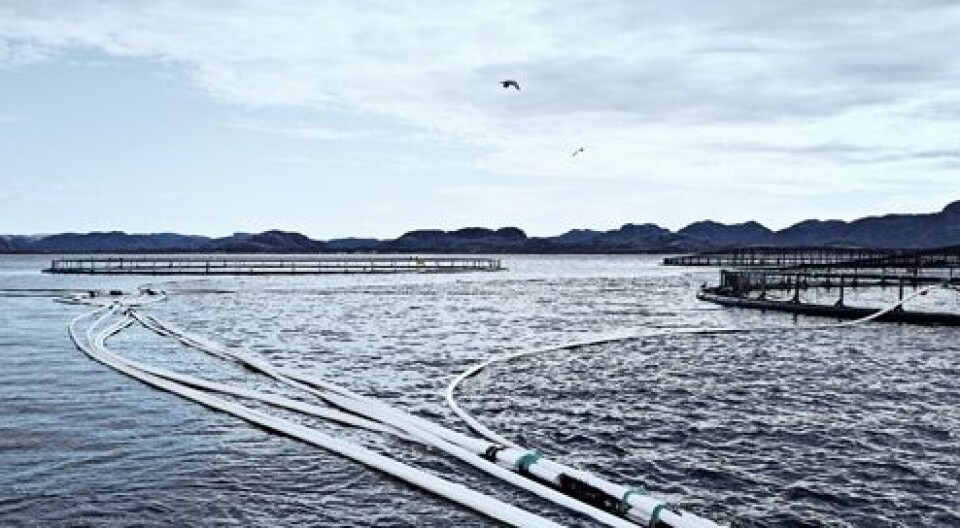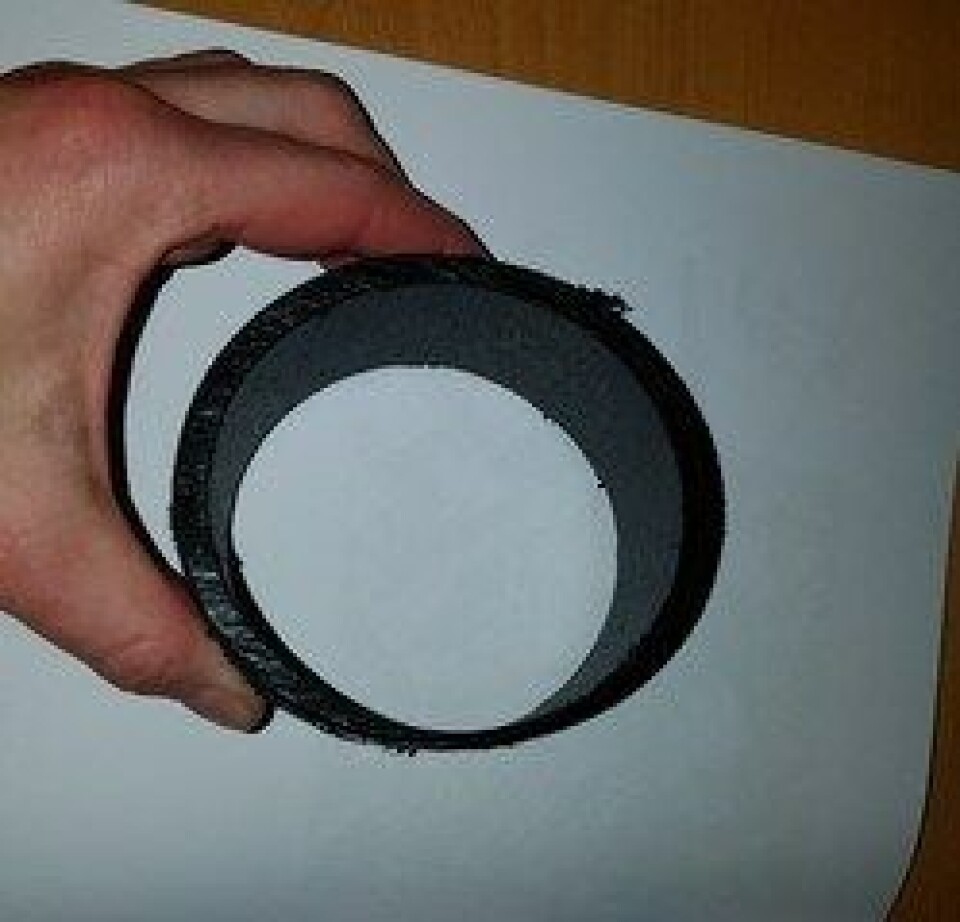
Feed pipe wear 'putting tonnes of plastic into sea'
Wear and tear on salmon farm feed pipes is the source of tonnes of micro-plastic reaching the sea annually, a nature conservation group has concluded.
"We demand a rapid changeover to the use of other non-polluting material, to prevent further dispersal from aquaculture plants," said Silje Ask Lundberg, leader of the Norwegian Society for the Protection of Nature/Friends of the Earth Norway (Norges Naturvernforbundet), in a post on the organisation's website.
She has now sent a letter to both the Norwegian environment minister, Vidar Helgesen, and fisheries minister, Per Sandberg, with a call for measures to stop plastic pollution.

Fisherman Arnold Jensen, a fisherman and a member of the organisation's Fisheries and Aquaculture Committee, raised the issue internally. He looked at five different types of discarded feed pipes, and saw that the pipes were worn. Some of them had only 1 millimeter thickness on parts of the pipe, which typically is about 7mm thick.
Cut and weighed pipes
Jensen cut the pipes into two-metre lengths and weighed them. The lengths weighed between 1,320 and 1,490 grams per metre. An unused example of this type of pipe, according to the organisation, typically weighs around 1900 grams per metre.
This means that between 410 and 580 grams of plastic per metre has been worn away during the lifetime of the worn pipes.
Naturvernforbundet now requests that a thorough survey of microplastic emissions from feed pipes in the aquaculture industry be initiated immediately, along with an investigation into whether similar plastic pipes lead to microplastic discharge in other industries.
Replaced every five years
"Leakage from feed pipes in the aquaculture industry must be included in the calculations for the amount of microplastic that leaks in Norwegian fjords and marine areas, and measures must be investigated and implemented to solve the problem," it points out.
"Emissions of micro-plastic leaking from fishery and fish farming equipment must come under the pollution act and require a discharge permit."
Pellets that pass through feed pipes under high pressure wear the plastic inside the pipes, so they must be replaced regularly. Information Naturvernforbundet has received from the aquaculture industry suggests that such pipes are replaced every five years.
Plastic from the feed pipes ends up in the salmon cages together with the pellets, and from there it is spread into the sea.
Half a kilo per metre
The abrasion from the five pipes Naturvernforbundet looked at suggests a potential wear of about half a kilo of microplastic per metre of pipe.
According to the organisation, a single farm has between 500 and 10,000 metres of feed pipes. Thus, they have calculated the leakage of microplastic from the feed pipes in a single farm to be between 250 kilograms and five tonnes during the life of the pipes.
Naturvernforbundet qualifies its estimate by pointing out there is uncertainty about how wear and tear is spread throughout the pipe wear. It points out that it is reasonable to assume greater wear and tear in connection with couplings.
Estimates 325 tonnes of microplastic
It bases it calculations on the assumption that there are 800 farms with an average of 4,000 metres of feed pipes, which it says is a moderate estimate. According to the Directorate of Fisheries statistics, there have been 572 localities in operation in October 2017, on average this year.
Thus, Naturvernforbundet estimates a potential of 325 tonnes of microplastic from Norwegian fish farms a year.
In addition, it points out that proliferation of microplastics can occur when the feed pipes are cut up for disposal. The pipes are generally cut to five metres by chainsaw before they are transported. Cutting, according to FoE Norway, creates significant amounts of plastic shavings it fears end up in the sea.























































